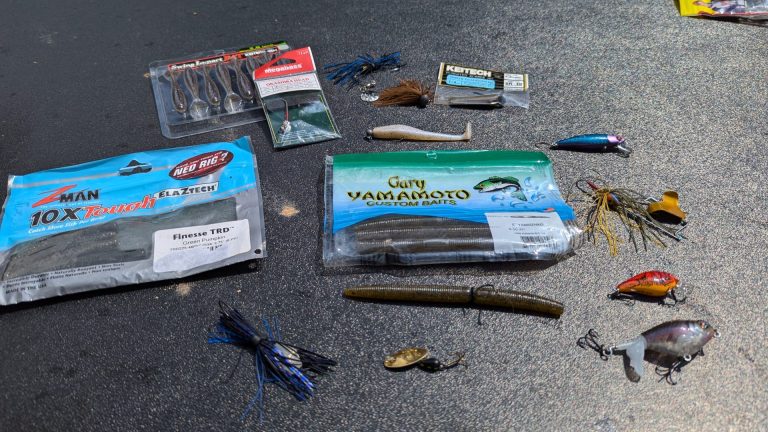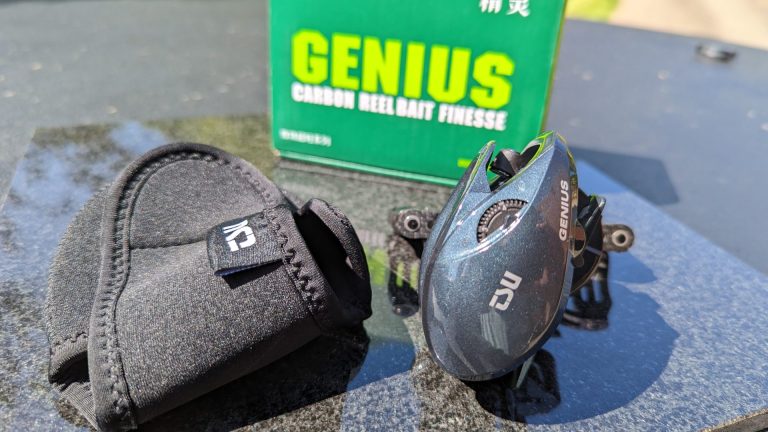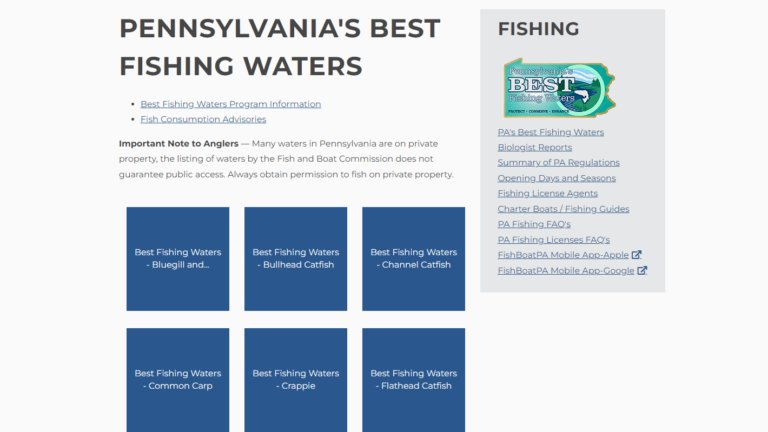The Whopper Plopper: The Ultimate Guide to This Game-Changing Lure in 2024
Imagine the heart-pounding excitement of a massive bass exploding on your lure, sending water flying in all directions! That’s the thrill of topwater fishing. The Whopper Plopper delivers, and it’s just one of the reasons why this unique topwater bait has taken the fishing world by storm.
Did you know that in a recent survey, 78% of professional bass anglers ranked the Whopper Plopper as their top choice for topwater fishing? In this comprehensive guide, we’ll dive deep into the world of this game-changing lure, exploring its history, mechanics, and how you can use it to land your personal best in 2024!
Table of Contents
The Whopper Plopper Revolution: Understanding Its Unique Design
Let’s dive into the fascinating world of the Whopper Plopper, shall we? This little marvel has become the number one producing lure for many anglers, and for good reason!
The origin story of the Whopper Plopper is quite interesting. It was created by Larry Dahlberg, a legendary angler and lure designer. Larry wanted to create a topwater bait that combined the best features of a buzzbait and a walking bait. After countless prototypes and tests, the River2Sea Whopper Plopper was born.
The Whopper Plopper has been around for over a decade. It kind of jumped into the spotlight in 2016 when Chris Lane was scene fishing it during the Bassmaster Elite Series Toledo Bend.
River 2 Sea produced a whopper plopper video in 2012 that showed Ish Monroe fish whopper ploppers catching bass. But for me, it was watching NDYAK angler on Youtube fishing ploppers catching pikes and large smallmouth that made me want to give it a try. And that wasn’t until 2019 or so.
Now, let’s break down its innovative components. The Whopper Plopper consists of two main parts: a hard plastic body and a soft plastic tail (often called the “plopper”). The body is designed to be aerodynamic for long casts, while the tail is what gives this lure its unique action and sound.
Speaking of sound, that’s where the magic happens! As you retrieve the lure, the tail rotates, creating a “plop-plop-plop” sound that drives fish crazy. This sound, combined with the surface disturbance, mimics a variety of prey and triggers predatory instincts in fish.
Choosing the Right Plopper: Size, Color, and Model Selection
Alright, folks, let’s talk about picking the perfect Whopper Plopper for your fishing needs.
Lure Sizes
First up, we’ve got size. Whopper Ploppers come in various sizes, typically ranging from 60mm to 190mm. The smaller sizes (60-90mm) are great for finicky fish or when you’re targeting smaller species.
As a BFS guy, these are the sizes I fish. The Whopper Plopper 60 is my go-to, and can be thrown on almost any typical BFS rod. It weighs 1/4 ounce (7 grams), and can produce both numbers and size in just about any body of water that holds bass.
The Whopper Plopper 75 and 90 are my “Power BFS” lures. The 75 has a deeper body shape similar to the 60. It weighs in at 9/16 oz or 16 grams. The whopper plopper 90 size is longer, but narrower, looking more like your typical topwater pencil. It’s also touch lighter at 1/2 oz (14 grams).

The mid-sized ones (110-130mm) are your all-around workhorses for most anglers, suitable for most situations. They are essentially scaled-up versions of the 90, with the whopper plopper 110 weighing a solid 1 ounce. The whopper plopper 130 size is 1 3/8 ounce.
The big boys (150-190mm) are perfect for targeting trophy fish or when you need to make some serious noise. These are also great for targeting Pike or Muskie.
Choosing The Right Color
Now, onto colors. This can be a bit tricky, but here’s a general rule of thumb: In clear water, go with more natural colors like bone or silver. Or one of my favorites – the Munky Butt. In stained or muddy water, opt for brighter colors like chartreuse or fire tiger. And if you’re after smallmouth, you can rarely go wrong with black. Don’t be afraid to experiment, though! Some of my biggest fish have come on the perch color in stained water!
As for models, there are also silent versions and salt-water specific models. The silent version is a more subdued plopper action, and can be really effective on glass-calm mornings.
Rigging Your Whopper Plopper for Success
Now that we’ve got our Whopper Plopper picked out, let’s talk about how to rig it up right.
For your rod, you’ll want something with some backbone to it. For non-BFS angflers, a medium-heavy to heavy action rod in the 7′ to 7’6″ range is ideal. This gives you the power to set the hook and control big fish, while still allowing for long casts.
For BFS folks, I also find a “Power” BFS setup to be effective. Lately I’m loving the Kistler Kyrios for this work – it’s such an amazing rod for $100.
Reel-wise, a higher-speed baitcasting reel (7:1 ratio or higher) is your best bet. This allows you to pick up slack quickly when a fish hits.
For line, I’m a big fan of braided line. It gives you the strength to pull fish out of cover and the sensitivity to feel every little bump. It also floats, so it doesn’t impart any weird drag to the front of the lure and affect its performance.
When it comes to knots, you can’t go wrong with a Palomar knot. It’s strong, simple, and works great with braided line. Or you can do the Double Pitzen – which I often use for larger lures.
Mastering Whopper Plopper Techniques
Alright, let’s get into the nitty-gritty of how to fish this bad boy!
The classic ‘steady retrieve’ is your bread and butter with the Whopper Plopper. Simply cast it out and reel it in at a steady pace. This works great when fish are aggressive and actively feeding on the surface.
But be sure to take advantage of what makes the plopper so effective: It floats! So it gives you the attraction powers of a buzz-bait, but you can pause the lure and wait for a fish to strike. Often you will see a fish swirl and miss the plopper. If you stop, and wait, maybe give it just a little twitch, you will often find that same fish comes back for a second attempt, and it will absolutely SMASH it the second time around!
The idea of waiting on the fish was the hardest part of mastering this lure for me. But you really need to wait until the fish takes the lure under and you feel this fish before setting the hook. This will give you a much higher hook-up and catch rate, and prevent a lure with sharp trebles from flying back at you due to a premature hookset.
But don’t stop there! You can also ‘walk the dog’ with a Whopper Plopper. This involves twitching your rod tip while retrieving, creating a side-to-side action. It’s a bit tricky to master, but deadly once you get it down.
Another great technique is the ‘stop-and-go’ retrieve. Reel for a few seconds, then pause. This can trigger strikes from more hesitant fish.
Remember, different species and conditions call for different retrieves. For example, bass often prefer a faster retrieve in warm water, while a slower retrieve with longer pauses might be better in colder conditions.
Seasonal Strategies: When and Where to Fish the Whopper Plopper
The Whopper Plopper can be effective year-round, but let’s break it down by season.
In spring, as bass move up to spawn, try fishing it around shallow cover near spawning areas. A slower retrieve often works best here.
Summer is prime time for the Whopper Plopper. Fish are active and feeding heavily. Focus on areas like points, weed edges, and offshore structure. Early morning and late evening are often the best times.
As fall rolls around, bass start to feed aggressively to fatten up for winter. This is a great time to throw larger Whopper Ploppers around bait schools.
Even in winter, don’t count out the Whopper Plopper. On warmer days, a slow-retrieved Whopper Plopper can still entice lethargic fish to strike.
Troubleshooting Common Whopper Plopper Issues
Like any lure, sometimes things don’t go quite as planned with the Whopper Plopper. But don’t worry, we’ve got solutions!
Line twist can be a common issue, especially with mono or fluoro. Using a swivel or switching to braided line can help alleviate this problem.
Wind and waves can make it tough to fish a Whopper Plopper effectively. In these conditions, try upsizing your lure or slowing down your retrieve.
If your Whopper Plopper isn’t running straight, it might be due to a bent wire or misaligned tail. Gently bend the wire back into place or adjust the tail until it runs true.
Remember, practice makes perfect. The more you fish with the Whopper Plopper, the better you’ll become at troubleshooting and maximizing its effectiveness.
Alternatives
The Whopper Plopper is kind of like a combination between a buzz bait and a topwater pencil – so either of those could be good alternatives to this lure. But the design is so productive that other companies have created similar lures. It’s essentially a new category of lure.
Berkley has the Choppo, Heddon just released the Spin’n Image, and Googan has the Revolver to name a few. Another intriguing option for the finesse guys is the Twelve Oaks Custom Lures JDM Luxxe Avenge dual prop ploppers.
Conclusion
There’s no doubt about it – the Whopper Plopper has revolutionized topwater fishing, offering anglers an irresistible combination of sound, action, and fish-catching ability. By mastering the techniques and strategies we’ve covered, you’ll be well-equipped to make the most of this incredible lure in 2024 and beyond.
Remember, practice makes perfect, so don’t be afraid to experiment with different retrieves and presentations. The explosive strikes and unforgettable memories are waiting – now get out there and make some waves with your Whopper Plopper!






